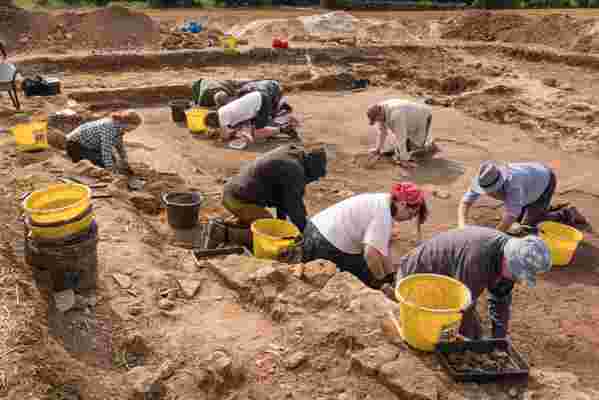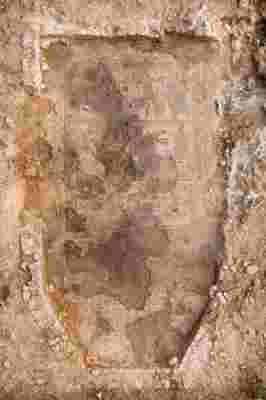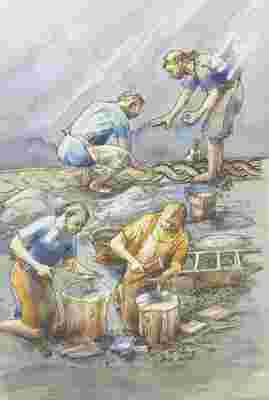A 1,700-Year-Old Roman Villa Has Been Discovered Below a British Farm
A mosaic depicting scenes from Homer’s The Iliad is among the United Kingdom’s most significant discoveries of Roman mosaics in the last century—if not ever—and it was just declared a protected monument. A British man, Jim Irvine, was strolling on his father’s farm in the summer of 2020 in Rutland County in the East Midlands of England with his wife and daughters when he spotted pottery bits, oyster shells, and other shards. Realizing that they were unusual, he looked up their exact location on Goggle Earth and saw a clearly defined crop mark in the field. Irvine’s family had worked on the farm for decades, but they had never noticed this marking.

The excavation site that revealed a Roman-era villa on a farm in Britain.
From there, the story unfolded like a thrill-filled play. Irvine and his father dug eight feet below ground on the area around the marking and unearthed a few of the rusty tiles of the mosaic that was hidden away. According to a report about the discovery from the University of Leicester, they then reached out to the archaeological team at Leicestershire County Council, a group that collaborates with the local authorities on heritage-related matters.

The unearthed mosaic
A team from University of Leicester Archaeological Services—who worked in partnership with Historic England—spent over a year further excavating the site. The team found more of the mosaic, which measures 36 feet by23 feet. The full picture reveals that it’s an image from The Iliad of the Greek warrior Achilles fighting with the Trojan prince Hector at the end of the Trojan War.

Rendering of Roman-era artisans laying mosaic.
The University of Leicester’s report says that the piece was likely part of the floor of a dining or entertaining area. “Mosaics were used in a variety of private and public buildings across the Roman Empire, and often featured famous figures from history and mythology,” the report states. “However, the Rutland mosaic is unique in the U.K. in that it features Achilles and his battle with Hector at the conclusion of the Trojan War, and it is one of only a handful of examples from across Europe.”
The archaeologists have surmised that the damage in the mosaic indicates that the site was later re-purposed. They think that the artwork was in a room which was part of a large villa complex from between the 3rd and 4th century A.D. where a wealthy Roman used to live. The team also found human remains around the rubble that hid the mosaic but speculate that they were interred when the villa had already been abandoned.
Irvine’s discovery was more than a year ago, but, based on advice from Historic England, it was only protected as a Scheduled Monument by the Department for Digital, Culture, Media, and Sport in late November. Historic England plans to further excavate the site next year, but history buffs can get their fix about this fascinating find in meantime in the BBC Two Series Digging for Britain in early 2022. “A ramble through the fields with the family turned into an incredible discovery,” Irvine said in the University of Leicester’s report. He continued a few sentences later by saying, “The last year has been a total thrill to have been involved with, and to work with the archaeologists and students at the site, and I can only imagine what will be unearthed next!”